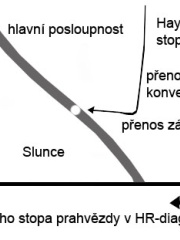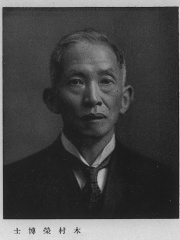







The Most Famous
ASTRONOMERS from Japan
This page contains a list of the greatest Japanese Astronomers. The pantheon dataset contains 644 Astronomers, 26 of which were born in Japan. This makes Japan the birth place of the 6th most number of Astronomers behind France, and Italy.
Top 10
The following people are considered by Pantheon to be the top 10 most legendary Japanese Astronomers of all time. This list of famous Japanese Astronomers is sorted by HPI (Historical Popularity Index), a metric that aggregates information on a biography's online popularity. Visit the rankings page to view the entire list of Japanese Astronomers.

1. Takeshi Urata (1947 - 2012)
With an HPI of 59.73, Takeshi Urata is the most famous Japanese Astronomer. His biography has been translated into 27 different languages on wikipedia.
Takeshi Urata (浦田 武, Urata Takeshi; 1947 – December 15, 2012) was a Japanese astronomer. He was a prolific discoverer of asteroids, observing at Nihondaira Observatory. In 1978 he became the first amateur to discover a minor planet (2090 Mizuho) in over fifty years, which he named after his daughter, Mizuho. His pioneering feat led to an upsurge in such discoveries. In the ten years that followed, amateurs from Japan discovered 160 minor planets. Urata shared his observation data with peer astronomers in Japan on a periodical called "Tenkai" (the Heavens), as well as contributed to academic journals such as Advances in Space Research and participated in poster presentations at astronomical conferences. Urata co-discovered the periodic comet 112P/Urata-Niijima in 1986. One of the most active amateur astronomers in Japan, he was also an editor of the Japanese Ephemerides of Minor Planets. The 1927-discovered asteroid 3722 Urata is named after him.

2. Tsutomu Seki (b. 1930)
With an HPI of 58.40, Tsutomu Seki is the 2nd most famous Japanese Astronomer. His biography has been translated into 26 different languages.
Tsutomu Seki (関 勉, Seki Tsutomu; born November 3, 1930) is a Japanese amateur astronomer and discoverer of minor planets and comets, born in Kōchi, Japan.

3. Chushiro Hayashi (1920 - 2010)
With an HPI of 58.08, Chushiro Hayashi is the 3rd most famous Japanese Astronomer. His biography has been translated into 21 different languages.
Chushiro Hayashi (林 忠四郎, Hayashi Chūshirō; July 25, 1920 – February 28, 2010) was a Japanese astrophysicist. Hayashi tracks on the Hertzsprung–Russell diagram are named after him.

4. Kiyotsugu Hirayama (1874 - 1943)
With an HPI of 58.04, Kiyotsugu Hirayama is the 4th most famous Japanese Astronomer. His biography has been translated into 19 different languages.
Kiyotsugu Hirayama (平山 清次, Hirayama Kiyotsugu; October 3, 1874 – April 8, 1943) was a Japanese astronomer, best known for his discovery that many asteroid orbits were more similar to one another than chance would allow, leading to the concept of asteroid families, now called "Hirayama families" in his honour.

5. Hisashi Kimura (1870 - 1943)
With an HPI of 56.71, Hisashi Kimura is the 5th most famous Japanese Astronomer. His biography has been translated into 18 different languages.
Hisashi Kimura (木村 栄, Kimura Hisashi; October 4, 1870 – September 26, 1943) was a Japanese astronomer originally from Kanazawa, Ishikawa. He devoted his career to the study and measurement of variation in latitude, building upon the work of Seth Carlo Chandler, who discovered the Chandler wobble. In 1899, he became the first director of the International Latitude Observatory at Mizusawa, Japan. He won the Gold Medal of the Royal Astronomical Society in 1936. He was one of the first people to be awarded the Order of Culture when it was established in 1937. The crater Kimura on the Moon is named after him, the same for the asteroid 6233 Kimura.

6. Hiroki Kosai (b. 1933)
With an HPI of 56.26, Hiroki Kosai is the 6th most famous Japanese Astronomer. His biography has been translated into 20 different languages.
Hiroki Kosai (香西 洋樹, Kōsai Hiroki; born 8 February 1933) is a Japanese astronomer with the Kiso Observatory. He is best known for helping to popularize astronomy in Japan and for his observations of comets and asteroids, most notably with his co-discovery the comet 1976 XVI. He is credited by the Minor Planet Center (MPC) with the discovery of nearly 100 asteroids.

7. Minoru Honda (1913 - 1990)
With an HPI of 56.20, Minoru Honda is the 7th most famous Japanese Astronomer. His biography has been translated into 16 different languages.
Minoru Honda (本田 実, Honda Minoru; February 26, 1913 – August 26, 1990) was a Japanese astronomer. Starting in 1937, Honda worked for Issei Yamamoto at the Zodiacal Light Observatory in Hiroshima. He discovered twelve comets between 1940 and 1968, including the periodic comet 45P/Honda–Mrkos–Pajdušáková. He discovered on FH Serpentis (Nova Serpentis 1970) on February 13, 1970 from Kurashiki, Japan. He was the first to report the very bright V1500 Cygni (Nova Cygni 1975) at magnitude 3.0 on August 29, 1975; it peaked at 2.0, and many hundreds of independent discoveries were subsequently made by others. The asteroid 3904 Honda is named after him, 8485 Satoru is named after his wife, and 11442 Seijin-Sanso is named after his astronomical observatory.

8. Kaoru Ikeya (b. 1943)
With an HPI of 55.83, Kaoru Ikeya is the 8th most famous Japanese Astronomer. His biography has been translated into 18 different languages.
Kaoru Ikeya (池谷 薫, Ikeya Kaoru; born 1943) is a Japanese amateur astronomer who discovered a number of comets. As a young adult, Ikeya lived near Lake Hamana and worked for a piano factory. During his employment there, he made his first discovery in 1963 with an optical telescope he built himself within his low budget. Two years later, he discovered the bright comet C/1965 S1 (Ikeya-Seki). Ikeya discovered the periodic comet 153P/Ikeya-Zhang on February 1, 2002, in Mori, Hokkaidō. The asteroid 4037 Ikeya is also named after Ikeya. On November 13, 2010, Ikeya and Shigeki Murakami co-discovered the comet P/2010 V1, now known as 332P/Ikeya-Murakami, using an optical telescope, rare in an era with access to digital imaging technology. Ikeya contributed his skill to the perfectly ground optics used in the construction of the Pentax 40 cm Cassegrain reflector telescope installed at the Singapore Science Centre Observatory in March, 1989.

9. Okuro Oikawa (1896 - 1970)
With an HPI of 55.09, Okuro Oikawa is the 9th most famous Japanese Astronomer. His biography has been translated into 18 different languages.
Okuro Oikawa (及川 奥郎, Oikawa Okurō; 1896–1970) was a Japanese astronomer and discoverer of minor planets. He is credited by the Minor Planet Center with the discovered 8 asteroids between 1927 and 1929. The outer main-belt asteroid 2667 Oikawa was named in his memory. Naming citation was published on 1 June 1996 (M.P.C. 27329).

10. Hiroshi Kaneda (b. 1953)
With an HPI of 55.07, Hiroshi Kaneda is the 10th most famous Japanese Astronomer. His biography has been translated into 19 different languages.
Hiroshi Kaneda (金田 宏, Kaneda Hiroshi; born 1953) is a Japanese astronomer and discoverer of minor planets from Sapporo, in the northernmost prefecture of Japan. Kaneda ranks among the world's most prolific individual discoverers of minor planets. He is credited by the Minor Planet Center with the co-discovery of 705 numbered minor planets, between 1987 and 2000, all of them in collaboration with astronomer Seiji Ueda. Along with being an astronomer, Kaneda works as a computer programmer and is a developer of astronomical software. The main-belt asteroid 4677 Hiroshi, discovered by Atsushi Takahashi and Kazurō Watanabe at Kitami in 1990, is named after him.
People
Pantheon has 26 people classified as Japanese astronomers born between 1870 and 2000. Of these 26, 18 (69.23%) of them are still alive today. The most famous living Japanese astronomers include Tsutomu Seki, Hiroki Kosai, and Kaoru Ikeya. The most famous deceased Japanese astronomers include Takeshi Urata, Chushiro Hayashi, and Kiyotsugu Hirayama.
Living Japanese Astronomers
Go to all RankingsTsutomu Seki
1930 - Present
HPI: 58.40
Hiroki Kosai
1933 - Present
HPI: 56.26
Kaoru Ikeya
1943 - Present
HPI: 55.83
Hiroshi Kaneda
1953 - Present
HPI: 55.07
Kenzo Suzuki
1950 - Present
HPI: 54.29
Seiji Ueda
1952 - Present
HPI: 53.22
Tomimaru Okuni
1931 - Present
HPI: 53.14
Takao Kobayashi
1961 - Present
HPI: 53.13
Kazuro Watanabe
1955 - Present
HPI: 52.84
Kin Endate
1960 - Present
HPI: 52.22
Naoto Satō
1953 - Present
HPI: 51.78
Masaru Arai
1952 - Present
HPI: 51.52
Deceased Japanese Astronomers
Go to all RankingsTakeshi Urata
1947 - 2012
HPI: 59.73
Chushiro Hayashi
1920 - 2010
HPI: 58.08
Kiyotsugu Hirayama
1874 - 1943
HPI: 58.04
Hisashi Kimura
1870 - 1943
HPI: 56.71
Minoru Honda
1913 - 1990
HPI: 56.20
Okuro Oikawa
1896 - 1970
HPI: 55.09
Yuji Hyakutake
1950 - 2002
HPI: 54.93
Kiichirō Furukawa
1929 - 2016
HPI: 54.62
Overlapping Lives
Which Astronomers were alive at the same time? This visualization shows the lifespans of the 4 most globally memorable Astronomers since 1700.











